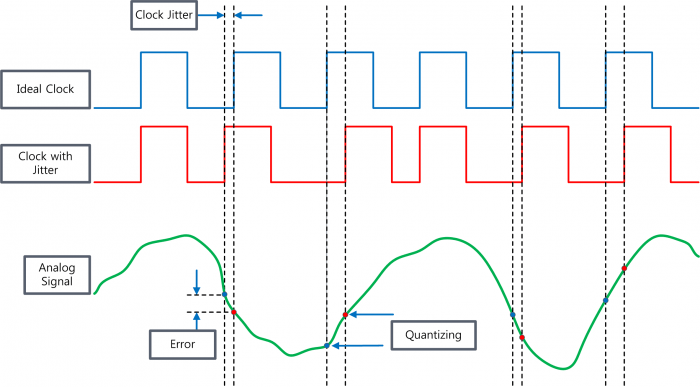What is Jitter?
Jitter is one that gets a lot of attention, but not much understanding. Basically, sometimes a sound that’s really really high in frequency like a cymbal shimmer, harmonic, or other high note will have this strange warbling or oscillating sound that wasn’t in the original recording. What’s happening is that the DAC is accidentally creating a lower frequency note because the signal is just close enough in frequency to the sample rate—of the samples are taken at inaccurate times by an older, crappier clock mechanism.
Jitter is an often-used word describing digital audio errors manifesting themselves as noise. A digital audio flow may see ones and zeros swap places by mistake - such as in, instead of 1010, a jitter may cause the number to be 1001. The result? Glitchy audio.
How do you avoid Jitter?
Increase the sample rate, of course! The more data points you have, the less likely an error will happen in a given set of frequencies. However, there is a point where this simply does not audibly help anymore. Essentially, you can eliminate this issue if you’re able to sample at least twice per period, thereby forcing sampling errors to exist only in the highest frequencies that you’d likely be unable to hear anyway. Considering that the uppermost limits of human hearing range from 12-22kHz, doubling that rate nets you somewhere within 24-44 thousand samples per second, or 44kHz. Is that last number sound familiar? It should: 44.1kHz is the most common sample rate for MP3 files!
Low jitter levels result in a truer conversion, and DACs may often use a separate filter chipset for keeping the digital jitter count low.
Now, the key thing to remember is: don’t let jitter freak you out. It’s actually irrelevant in almost all scenarios. You can usually ignore it completely, even if it is good knowledge to have. Just in case.





Leave a comment
All comments are moderated before being published.
This site is protected by hCaptcha and the hCaptcha Privacy Policy and Terms of Service apply.